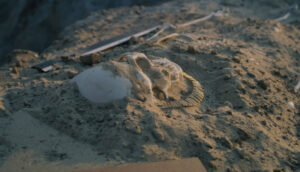
Ancient Skeletons Reveal Secrets of the Oral Microbiome
A research team in Japan uncovers differences between ancient and modern oral pathogens.

Using new technologies and methodologies, researchers from Tokyo Medical and Dental University (TMDU) in Japan have been able to assess bone loss and diagnose periodontal diseases from 12 skeletons of the 17th, 18th, and 19th centuries without the need to extract teeth. The time frame is representative of Japan’s Edo era, which extended from 1603 to 1867.1
During this period, according to study co-author Hiroaki Kobayashi, MD, Japan adhered to a strict isolationist policy, allowing minimal interaction with foreigners. Says Kobayashi, “This policy appeared to be reflected in the oral microbiomes we studied, which were distinct from modern and ancient Western counterparts. Thus, our study sheds new light on the evolution of the oral microbiome and on periodontal pathogenesis.”2
CUTTING-EDGE EVIDENCE COLLECTION
Typical means of evaluating periodontal tissues involve measuring the probing depth or clinical attachment level. In this case, the researchers measured and assessed vertical bone loss with a periodontal probe at six sites (mesiobuccal, midbuccal, distobuccal, mesiolingual, midlingual, and distolingual) on each tooth.
Microcomputed tomography was used to measure mesial and distal bone levels and root length in the mid-tooth section. This allowed researchers to accurately calculate vertical bone resorption and root length. The methodology is viewed as a major gain as such information was previously only available through tooth extraction.
The researchers examined all 12 sets of teeth for attrition, furcation involvement, caries, and torus. Supragingival and subgingival calculus were collected from the teeth of the skeletons. A dedicated ancient DNA laboratory at TMDU then extracted the DNA from the calculus samples.
TELLTALE DNA
Just as permafrost keeps life forms from Earth’s past frozen in time, ancient calculus preserves DNA. By accessing this DNA, the researchers were able to compare the microbiome bacteria of ancient humans with that of their modern counterparts. They found some similarities in that 42% of the skeletons had periodontal diseases compared to 37.3% of middle-aged Japanese in 2005. But there the similarities end.
A widely held theory is that the primary cause of periodontitis is the “red complex,” which is composed of three pathogens: Porphyromonas gingivalis, Tannerella forsythia, and Treponema denticola. The study revealed, however, that while the red complex has been found in European skeletons and appears to be a causative factor of periodontal diseases in modern humans, this was not the case in the Edo-period Japanese skeletons. In these ancient skeletons, periodontal disease etiology was traced to a different set of core pathogens: Eubacterium, Mollicutes, and Treponema socranskii.
INFLUENTIAL FACTORS
Numerous variables can account for differences in the microbiomes between Edo-period and 21st-century humans. The researchers note that brushing techniques and materials would have been quite different. Additional influences include changes in diet and lifestyle due to industrialization and other environmental factors, and Japan’s Edo-era isolationist policy, in which there would have been no transmission of foreign bacteria.
Study findings led the researchers to conclude that periodontitis is not necessarily induced by the red complex and that potential periodontal pathogens in the Edo era were different from those in modern times. The study also confirmed that dental calculus can preserve bacterial DNA and reveal the microbial composition in ancient samples.
REFERENCES
- Shiba T, Komatsu K, Sudo T, et al. Comparison of periodontal bacteria of edo and modern periods using novel diagnostic approach for periodontitis with micro-CT. Front Cell Infect Microbiol. 2021;11:723821.
- Tokyo Medical and Dental University. Drilling into the dental secrets of Edo-era Japanese bacterial genomes. Medical Xpress. Available here.

